Rational heating system: What to choose? Technical characteristics of radiators of water heating, warm floors and heating plinths.
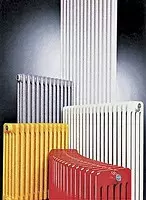
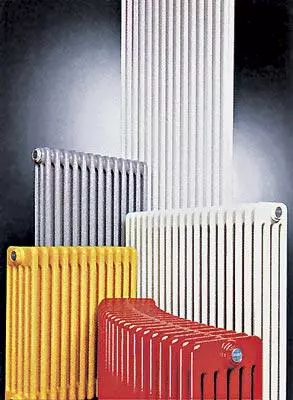
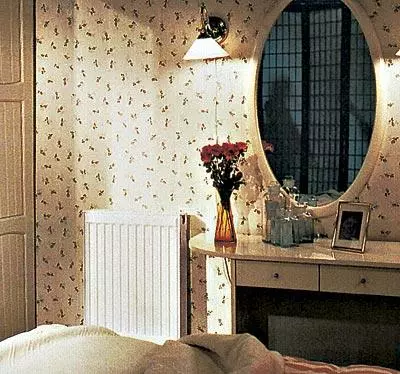
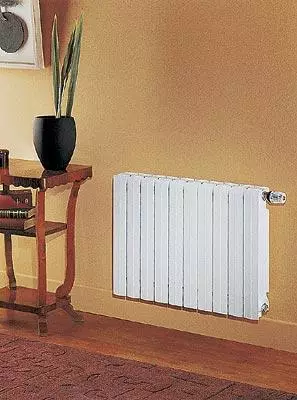
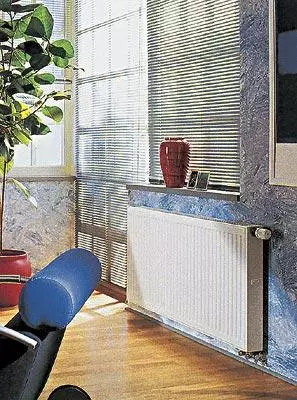
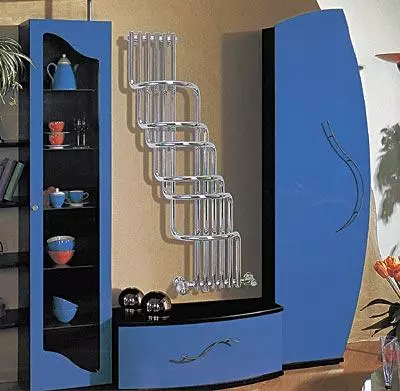
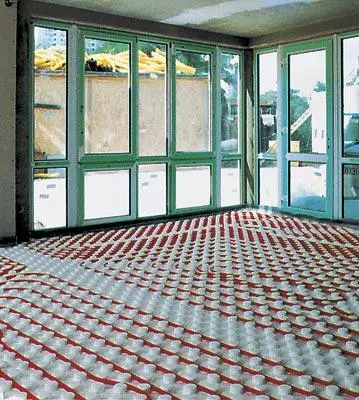
The worse the weather, the more I want the apartment to be cozy and warm. What is needed for this? In addition to reducing heat loss associated with windows and balcony doors, it is worth thinking about the rational heating system.
Over the past 3-5 years, the requirements and conditions for the development of projects of water heating systems of residential buildings have significantly changed, which is determined by the adoption of a state system of a number of changes to already existing regulatory documents, for example, SNIP 11-33-79 "Construction heat engineering" (changes N3, 4), SNiP 2.04 .05-91 "Heating, ventilation and air conditioning". At the same time, a large number of modern heating equipment from Europe appeared on the Russian market, not only traditional, such as water heating radiators, but also fundamentally new for Russia, such as water and electric heating systems and a number of others. It should be noted that when choosing a heating system, not only its efficiency is becoming increasingly important, but also the degree of efficiency, as well as aesthetic, modern design.
Water heating radiators
Five years ago, the replacement of water heating radiators was a purely technical problem. You could only buy Russian equipment, and even then after long searching. Now there are products on the Russian market more than thirty manufacturers from 13Tran, mainly Europe. Italian firms are most widely represented, which in 1994 were the first to come to the undeveloped Russian market.Water heating radiators, differing in design (tubular, panel and sectional) and material (cast iron, steel, aluminum and combination of steel-aluminum), have a number of common parameters that determine their long-term and safe use.
Of course, the most important parameter is the limit pressure withstand radiator. Therefore, the first question that must be specified by the seller, buying a radiator, is what working and crimping (test) pressure, recorded in the product passport and confirmed the guarantee. The secondary working pressure in the heating highways is 2-3 atmosphere. This applies mainly to old brick houses and five-story stores. Daily high-altitude panel buildings pressure in heating systems is significantly higher. The main load on the radiators has to during the tests of communications with high pressure (crimping), while the pressure is briefly rumbles to 6-8 atmospheres, and sometimes higher. Therefore, it is desirable to use radiators designed for higher pressure indicators. In the opposite if you risk spoaling your apartment and flood your neighbors due to the rupture of the radiator pipes, such cases, unfortunately, are not uncommon. Since the tests of highways are usually carried out at the end of July-early August, that is, in the midst of vacations, the consequences of such an accident can be sufficiently severe.
From the many years of experience in installing European models of heating systems in Moscow, it is known that it is better to use radiators with a working pressure of 8-10 atmospheres in the houses of the old building and with a higher working pressure in high-altitude houses. For new buildings, the Bimetallic SIRA CF-500 radiators can be recommended or designed specifically for high-altitude houses of IRSAP TESI and Calidor Super, withstanding the highest working and test pressure.
Radiators with lower working and test capabilities can only be used where the pressure in the heating system is guaranteed not to be higher than the passport - and these are cottages with autonomous heating systems.
There are some other parameters for which you need to pay attention to the purchase of a water heating system. One of them is the intercentrous distance and diameter of the inlet holes of radiators. Intercentricular distances adopted in Russia - 500 and 300mm. The most common diameter of the inlet openings is 1/2 inches. If these parameters differ, when installing the system, you will have to edit the supply pipes and acquire adapters. We have nothing terrible, but work is somewhat more complicated. Be sure to pay attention to the design of pipe supply. Weekly models of radiators (for example Platella Universal) are provided by the lower supply, in our homes such an option is rare quite rarely and, as a rule, in newly built houses or houses after major repairs.
When buying a radiator, do not miss the presence of an air duct valve, or, as otherwise called, the crane of Maevsky. This is an extremely useful detail that will allow you, without resorting to the help of masters, self-leaving an air stopper from the heating system. The valve is included in some models of radiators, but is often offered separately.
In addition, the size of the radiator itself and its heat transfer is fundamentally important. Having calculated the required power of the system for the room with the height of the ceilings up to 3 meters, one window and one door, it is necessary to proceed from the 1kW indicator to 10m2. For better radiator heat transfer during its installation, it is necessary to follow the manufacturer's recommendations, paying particular attention to the distance between the radiator and the wall, floor and the windowsill.
And finally, a very important part of the system - the fastener system attached to each device. Increasing cases in it provides for the possibility of adjusting the already installed radiator in terms of the level, which facilitates its installation.
Simultaneously with the replacement of radiators on the supply heating communications, it is desirable to establish cranes for overlapping water, it will significantly facilitate the replacement of the radiator when any emergencies occur.
Temperature regulators make sense to put only in those houses, where in the heating system the water pressure is quite high, since the overwhelming majority of heating systems are devices that can be reduced by the flow of hot water through the heating system by reducing the lumen in the pipe through which it is supplied water. AU of low-rise buildings and houses of the old building, where water pressure and so small, the installation of thermostators leads to an even greater decrease in water supply and as a result, non-radiators.
And in conclusion about prices for water heating radiators. The cost of the panel radiator, depending on the power, fluctuates from 50 to 250dolls, and the higher the power, the cheaper each WATT heat transfer will cost. The cost of the convector radiator section varies from 15 to 25dollars, a device of 6-8 sections is usually proposed. Domestic cast iron radiators MS-140 with intercentrome distances 300 and 500mm and B-Z-140-300 can be purchased by approximately $ 5> for one section, the standard package of delivery- 7 sections. You can now meet the domestic steel radiators "Comfort" and "Universal", as well as aluminum "Ural" and "RS".
Warm floor
Unconventional for Russia, but acquiring every year the warm floors are becoming increasingly popular forms of premises. A variety of designs of these heating systems are almost a quarter of a century widely used in Europe. Now there are two varieties of warm floors in the Russian market: water heating floors and cable systems. An essential advantage can be attributed to the absence of visible elements of heating systems, increased air sound insulation, the possibility of regulating the air temperature with one thermostat. But, perhaps, the most important advantage of warm floors compared to traditional heating radiator systems is an improved thermal regime in the room.
Warm floor with heating water system
The idea of a warm floor with water heating is extremely simple and rational. The heat and waterproofing layers are placed on the floor of the heated room, and the metal-polymer pipes are mounted on top of them in a step at which the optimal distribution of heat in the room is achieved. Methods for fastening pipes to the floor can be diverse. This is the heat, and sound insulation panels, and blocks with special retainers for metal-polymer pipes, and harpoon-brackets fastening, a metal mesh with swivel clips, and a variety of fixing tires. At the edges of the room, a damper (compensating thermal expansion) of the tape is mounted, after which a concrete screed is made over the pipes, which is a heat transfer element in this heating system. Credit components of the system include a distribution manifold complete with a crane for air outlet and a ball shut-off crane, as well as a room thermostat. The cost of a square meter of a set of warm floor with water heating - from21Dollar (excluding the cost of work). Details of the installation of water heating floor was described in the previous issue of the magazine (N10 (12) 1998).Water warm floors are reliable and durable, can work from both central heating systems and heating boilers. The life of metal-polymer pipes while complying with the calculated parameters (temperature and pressure) according to experts should be at least 50 years. In this case, the maximum coolant temperature should not exceed 70c, and the maximum allowable water flow rate should not be greater than 1 m / s. The diameter of the used metal-polymer pipes is 1/2 inches. The heat transfer of the square meter of such a gender reaches 70-100 W. The height of the design of the warm floors with water heating of the company Rehau (Germany) is approximately 52mm.
Cable Heating Systems
Recently, warm floors with heating cable systems are becoming increasingly wide for heating rooms. Valid dreams from conventional heating systems, they allow for a much more uniform heating of the room, while the temperature of the floor exceeds the air temperature of only 2-3 degrees, creating an optimal thermal mode.
The set for mounting a warm floor as a rule includes an electric heating cable, a thermostat, a thermal sensor, assembly guides. The system is powered by 220V. Omontrase of a warm floor Our magazine has already written (November 187), but nevertheless, briefly remind. A layer of thermal insulation (hard foam, cork slabs, isophlex, polyurethane foam) 2-5 centimeters is placed on the old concrete screed or directly to the overlap. The thickness of the thermal insulation is determined by the location of the room. Be sure to make thermal insulation in the ground floors or on concrete floors. Basic buildings Laying thermal insulation is desirable, but not necessarily. Top of thermal insulation is made with a thickness of 1Santimeter, on which the mounting guides are located. Heating sections are laid on the surface evenly, with a constant step of 10-20 centimeters, not reaching approximately 5 percents to the walls. The temperature sensor is installed in the plastic tube between the heating cable coils. Sometimes under the mounting guides and heating cables, a heat-level metallic screen is installed. On top of the cable also makes a concrete screed with a thickness of from2 to 3xantimeters. Flooring can be any, at your request: tile, marble, carpet, parquet or parquet board.
The temperature regulator is located on the wall in the most convenient place. The mounting ends from the heating cable and the sensor are connected to the thermostat. If several heating sections are stacked, their connection is carried out through a dispenser, installed under the thermostat.
Temperature regulators, as a rule, have a temperature adjustment range from + 10 to + 40C. Many of them have an energy-saving day-night function, have a built-in clock or the ability to program work mode for a week.
Heating cables used in warm floors are made of materials providing increased reliability. They have two-layer isolation with special processing, which makes it non-combustible and uncompromising, with increased wear resistance, which protects the cable from corrosion. The shielding braid provides mechanical and electrical protection and prevents the propagation of electromagnetic fields. Sept the heating cables without metallic braid. They are reliable and cost much cheaper, but still do not save on security. No less important and how the cable system will be installed, single or two-wire. Preference should be given to two-wire, it is safer from the point of view of electromagnetic fields.
The service life of cable "warm floor" is not lower than any hidden wiring. Large firms manufacturing equipment for warm floors give a guarantee for their products more than 15 years and promise that the heating cable will serve as much as the floor in which it is installed.
Now about how to calculate the required power of the heating cable depending on the area of the room. For heating, 1.5-2m2 requires a cable with a power of approximately 0.2kw, and for an area of 18-22 m2-power 2,0kW. Really consumed the power of the system is lower than 70% of the nominal in winter and 10% in the offseason. The average consumption of electricity per year on 1m2 premises, provided that the system is properly installed, it is about 100kw, that is, heating the room in 20 kadral meters during the year on the current prices for electricity will cost approximately 420 rubles.
The most widely in the Russian market are now presented sets of equipment for electric "warm sex" Firms Ceilhit (Spain) and DE-VI (Denmark). The sets of ACSO (France) and Nokia (Finland) are less common. It is impossible not to mention the Russian-German cable heating systems of the company "Integral". They are equipped with Eberle's thermostators (Germany).
The cost of a set of cable heating system of the floor is 25-35 dollars per square meter. At the same time, the cost of the cable itself is 10-15 dollars per meter.
And the latter, which is necessary to remember, this is what, in accordance with the exponent SNiP, the time of complete solidification of concrete -8dly. Prior to this, the electric heating system is not included in any way!
Heating plinth
Another unusual heating device is a flashing plinth. This is something average between a conventional electric radiator and electric warm floor. Cego advantages, compared with electrical radiators, can be attributed to uniform heating of the room and imperceptibility. From electric heat floors, heating plinth differs not only by simplicity of installation and availability of heating elements for replacement, but also by heating up to a sufficiently high temperature (70c) and requires a careful attitude towards himself.The heating plinth is an outdoor plinth of polished limestone with a height of 10-13 centimeters, a thickness of 2,5 perifying meter and a length of 65 percentters with an electric heating element with a power of 80-100 W. Limestone is well warmed and accumulates heat, due to this, the high power of heating elements is not required. To warm the air in a room with a height of ceilings up to 3 meters to a temperature of + 20 + 22c, one section of the electroplitus is required by 2.5-3 square meters of room. The heating elements alternate with the unheated plots of the plinth from the same stone, which makes it possible to make a continuous framing of the room with uniform heating from all sides.
The cost of one section of the electric heating plinth is approximately 30Dolls of the United States, and to heat up with their help in 20m2, approximately 1500kW of electricity per year will be required, which in now the current rates will be about 38 rubles.
And in conclusion, another one, only the beginning to obtain distribution in Russia, but long-term used in the Scandinavian countries, the method of heating is a broken rolled alson module. It is an already ready-made heating element, mounting which is extremely simple: you need to roll the roll, attach edges to the stapler to the floor or wall and can be turned on in a 220V outlet. On top of the heating element can be mounted parquet, wall panels and similar finishing materials, without fear of fire or deformation of finishing materials from overheating. The ALSON module is heated no more than 35s and does not require complex adjustment devices. The conventions of this module can also be attributed to what it works at a voltage of 24V. The standard dimensions of the ALSON module: the width of the distance from 30 to 13xantimeters, length from09 to 72 meters.
As long as the apartments are installed in apartments, the heating of hot water will be the most economical. Although from the point of view of uniform heating room, comfort and design, alternative heating systems will be gained increasingly distribution.
Water heating radiators for urban use
| Name | Manufacturer country | Material | A type | ATM operating pressure. | Tested. ATM pressure. | Power, W | Price for 1kW, $ |
|---|---|---|---|---|---|---|---|
| SIRA CF-500 | Italy | Steel + aluminum | Sectional | fifteen | 22.5 | 140-280 (*) | 90-125 |
| Irsap Tesi. | Italy | Steel | Sectional | 12 | eighteen | 37-104 (*) | 135-275 |
| Top. | England | Aluminum | Sectional | 10 | fourteen | 600-2100 (*) | 88-115 |
| IBER (Manaut) | Germany | Alemy | Sectional | 10 | 13 | 130-200 (*) | 90-110 |
| Calidor-500Rus | Italy | Alemy | Sectional | 10 | fourteen | 150-230 (*) | 90-120 |
| Calidor Super | Italy | Aluminum | Sectional | sixteen | 24. | 200. | 75. |
| IPS-90-RUS | Italy | Aluminum | Sectional | 9.5 | 14.3 | 80-225 (*) | 75-140. |
| Radus. | Czech Republic | Aluminum | Sectional | nine | 10 | 100-300 (*) | 65-100 |
| RS-500 | Russia | Aluminum | Sectional | nine | fifteen | 197 (*) | fifty |
| COB-350 (500) | Russia | Steel + aluminum | Sectional | 10 | sixteen | 100, 126 (*) | 60. |
| Delonghi. | Italy | Steel | Panel | 10.5 | 13 | 800-3750 | 60-90. |
| Korado-Radic | Czech Republic | Steel | Panel | 10 | 13 | 551-3800 | 50-110 |
| Vsz Korad. | Slovakia | Steel | Panel | nine | 13 | 550-5400 | 50-100 |
| Purmo-Rettig | Finland | Steel | Panel | 10 | 12 | 430-4450 | 55-130 |
| Veha. | Belgium | Steel | Panel | 10 | 12 | 680-3500 | 65-100 |
| DD Demrad. | Germany | Steel | Panel | nine | 13 | 353-4130 | 47-70 |
| Biasi. | Italy | Steel | Panel | 10 | 12 | 1000-3000 | 55-75 |
| Platella Standard. | Italy | Steel | Panel | nine | 12 | 560-3750 | 80-120 |
| Kermi. | Germany | Steel | Panel | 8,7 | 13 | 535-3150. | 60-125 |
| Izoterm (Izoterm 2000) | Russia-Sweden | Copper + aluminum | Panel | 10 | sixteen | 228-5169 | 70-180 |
| COMPAKT (Manaut) | Germany | Steel | Panel | 10 | 13 | 620-4200 | 60-70 |
| VN 4000ntr. | Austria | Steel | Panel | 10 | 13 | 180-7328. | 70-100 |
| Arbonia. | Germany | Total | Tubular | 10 | fifteen | 865-2240 | 130-155 |
| Kalor | Czech Republic | Cast iron | Tubular | eight | 10 | 92-198 (*) | 82-110 |
| Termo. | Czech Republic | Cast iron | Tubular | eight | 10 | 192-380 (*) | 82-96 |
| MS-140-300 (500) | Russia | Cast iron | Tubular | nine | 12 | 185 (*) | 25. |
| Bl - 140-300 | Russia | Cast iron | Tubular | nine | 12 | 120 (*) | 35. |
(*) - Thermal power of the 1st section.
Water heating radiators for autonomous heating systems
| Name | Manufacturer country | Material | A type | ATM operating pressure. | Tested. ATM pressure. | Power, W | Price for 1kW, $ |
|---|---|---|---|---|---|---|---|
| Calidor-500 | Italy | Alemy | Sectional | 6. | nine | 150-230 (*) | 92-120 |
| Over | Italy | Aluminum | Sectional | 6. | nine | 150-240 (*) | 70-92 |
| Cm. | Italy | Aluminum | Sectional | 6. | nine | 120; 200 (*) | 165; 145. |
| Jolly | Italy | Aluminum | Sectional | 6. | nine | 127-210 (*) | 75-110 |
| Giacostar. | Italy | Aluminum | Sectional | 6. | nine | 150-230 (*) | 110-200. |
| SIMUN (NovaFlorida) | Italy | Aluminum | Sectional | 6. | nine | 150-230 (*) | 75-100 |
| Dubal (Roca) | Spain | Alemy | Sectional | 6. | nine | 260-440 (*) | 45-55 |
| Adra (Roca) | Spain | Steel | Panel | 6. | eight | 430-4600. | 75-165 |
| Roca. P300; P600 | Spain | Steel | Panel | 6. | eight | 130-7700 | 75-160 |
| Duba (Roca) | Spain | Cast iron | Tubular | 6. | 12 | 58.5-100 (*) | 140-220 |
(*) - Thermal power of the 1st section.
